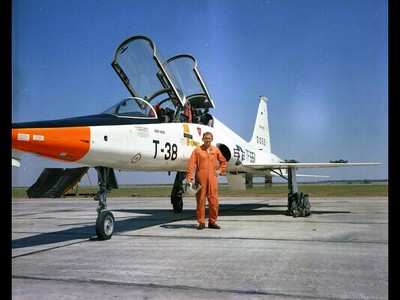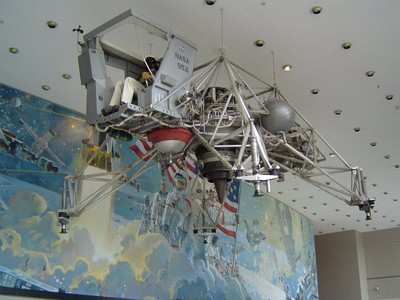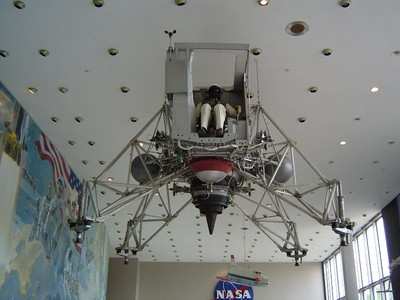Mon, May 04, 2009
Amazing and Gifted Life Shaped Manned Space Flight
A truly amazing player in the oh-so-dramatic earlier years of
space exploration and development has gone west.

Joseph S. Algranti was one of those "been there and done most of
it" flyers who helped build NASA from the launch pad up. Among the
responsibilities he undertook was his ascension to Chief of
Aircraft Operations at the Johnson Space Center during the heady
years of the Apollo Program, even directing the Lunar Lander
Training Vehicle (LLTV) program that was used to build skills and
familiarity with the flying chores that were to eventually land men
on the moon. In the absence of an earth-bound LM, the LLTV was what
used to training future Apollo moon landers. The development of
that vehicle (a succcessor to the LLRV) was not without its hazards
to the point where Algranti was forced to eject from the vehicle
while enagaged in the test program, on 8 December 1968 -- just a
few months after another of his peers had been forced to do so -- a
guy by the name of Neil Armstrong. The man qualified in quite a
number of airframes and based on what we've read, earned an immense
amount of respect from his peers. The one LLTV (of three, preceded
by 2 LLRVs) to survive the test program is on display in the lobby
of Building 2 at NASA's Johnson Space Center.

According to his home obituary, Algranti was born February 8,
1925 in New York, son of the late Samuel Joseph Algranti and
Beatrice Carol Algranti. He graduated from the University of North
Carolina at Chapel Hill with a BS in Physics. He was a pilot in the
US Navy and retired as a Commander in the Naval Reserves. He began
his career as a research test pilot in Cleaveland, OH at NACA. Next
he moved to NASA at Langley, VA. From 1962, he assumed the role of
Chief of Aircraft Operations and Chief Test Pilot at NASA in
Houston, TX, where he was instrumental in the training of all
aspects of the space program. He retired from NASA in 1992, and
after retirement, he moved to Chapel Hill and then to LaGrange.

Fair winds, Sir... and thank you for your service.
More News
He Attempted To Restart The Engine Three Times. On The Third Restart Attempt, He Noticed That Flames Were Coming Out From The Right Wing Near The Fuel Cap Analysis: The pilot repor>[...]
Make Sure You NEVER Miss A New Story From Aero-News Network Do you ever feel like you never see posts from a certain person or page on Facebook or Instagram? Here’s how you c>[...]
From 2009 (YouTube Edition): Leading Air Show Performers Give Their Best Advice for Newcomers On December 6th through December 9th, the Paris Las Vegas Hotel hosted over 1,500 air >[...]
Aero Linx: NASA ASRS ASRS captures confidential reports, analyzes the resulting aviation safety data, and disseminates vital information to the aviation community. The ASRS is an i>[...]
“For our inaugural Pylon Racing Seminar in Roswell, we were thrilled to certify 60 pilots across our six closed-course pylon race classes. Not only did this year’s PRS >[...]
 NTSB Final Report: Rutan Long-EZ
NTSB Final Report: Rutan Long-EZ ANN FAQ: Turn On Post Notifications
ANN FAQ: Turn On Post Notifications Classic Aero-TV: ICAS Perspectives - Advice for New Air Show Performers
Classic Aero-TV: ICAS Perspectives - Advice for New Air Show Performers ANN's Daily Aero-Linx (06.28.25)
ANN's Daily Aero-Linx (06.28.25) Aero-News: Quote of the Day (06.28.25)
Aero-News: Quote of the Day (06.28.25)





